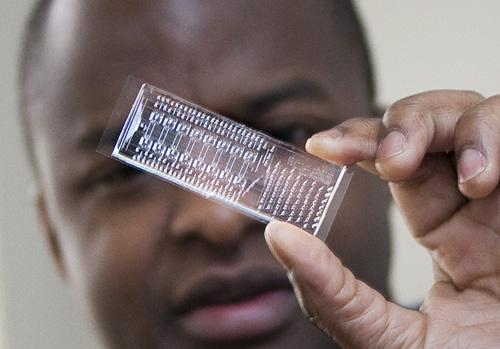Extraction of nucleic acid from cells or viruses is a necessary task for many applications in the fields of molecular biology and biomedical diagnostics. The chemical and physical methods used for the extraction of nucleic acid suffer from various disadvantages such as inefficient cell lysis, poor recovery of nucleic acids, damage to cellular contents, sticking of denatured proteins to the released nucleic acids and interfering in downstream processing and/or assays. The following invention uses ultrasonic disruption to overcome the drawbacks of chemical and physical cell lysis methods.
LLNL has invented a new high-throughput assay for sample separation that uses the vibrations of a piezoelectric transducer to produce acoustic radiation forces within microfluidic channels. The system includes a separation channel for conveying a sample fluid containing the different size particles, an acoustic transducer and a recovery fluid stream. The polymeric films containing the fluid would be sealed upon application of heat and further partitioned into individual microliter or picoliter samples. This approach would allow for the purification, separation, and fractionation of different types of particles (viruses, proteins, nuclei acids, etc.) from complex biological samples suspended in a sample fluid. The technology also minimizes the reaction and process time of the samples.
The figure shows a top-view of the microfluidic chip showing the H-filter geometry.
- Uses acoustic waves to disrupt cells
- Overcomes the drawbacks of chemical and physical cell lysis methods
- High throughput
- Continuous flow and processing of Samples
- Biological pathogen detection and identification
- Development of personalized medical therapies
- Biomedical applications, including single-cell analysis, PCR, DNA sequencing, and flow cytometry
- Diagnostics
- Food and beverage safety
- Forensics
- Chemical separations
- Drug discovery


